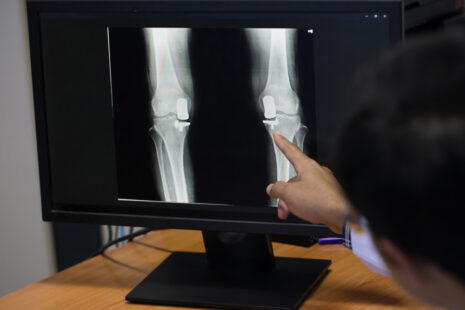The choice between physical therapy and chiropractic care for spinal stenosis depends on various factors, including individual preferences, the severity of symptoms, underlying health conditions, and treatment goals.
Both physical therapy and chiropractic care can play valuable roles in managing spinal stenosis, but they approach treatment from different perspectives and may offer different benefits…
- Physical Therapy (PT)
- Physical therapy focuses on improving strength, flexibility, mobility, and function through targeted exercises, manual therapy techniques, and therapeutic modalities.
- Physical therapists develop individualized treatment plans tailored to address the specific needs and limitations of each patient.
- Physical therapy for spinal stenosis may include exercises to strengthen the muscles supporting the spine, improve posture and alignment, and increase flexibility in the spine and surrounding tissues.
- Manual therapy techniques such as joint mobilization, soft tissue massage, and stretching may be used to alleviate pain, reduce muscle tension, and improve joint mobility.
- Physical therapists may also provide education on posture, body mechanics, ergonomic modifications, and self-management strategies to help patients manage their symptoms and prevent recurrence.
- Physical therapy aims to improve overall spinal health, function, and quality of life, often through a multidisciplinary approach that may include collaboration with other healthcare providers.
- Chiropractic Care
- Chiropractic care focuses on diagnosing and treating musculoskeletal conditions, including spinal stenosis, through spinal manipulation, adjustments, and other manual techniques.
- Chiropractors believe that misalignments or restrictions in the spine (subluxations) can interfere with nervous system function and contribute to pain and dysfunction.
- Chiropractic adjustments aim to restore proper alignment and mobility to the spine, alleviate pressure on nerves, and promote overall health and well-being.
- Chiropractic care for spinal stenosis may involve gentle adjustments to improve spinal alignment, reduce inflammation, and alleviate symptoms such as pain, numbness, and tingling.
- Chiropractors may also provide advice on lifestyle modifications, ergonomic adjustments, and exercises to support spinal health and prevent future problems.
The choice between physical therapy and chiropractic care for spinal stenosis depends on individual preferences, treatment goals, and the recommendations of healthcare providers. Some patients may benefit from a combination of both approaches, while others may find one modality more effective or suitable for their needs. It’s important to consult with qualified healthcare professionals, such as physical therapists, chiropractors, and orthopedic specialists, to discuss treatment options and develop a personalized plan that addresses your specific condition and goals.




